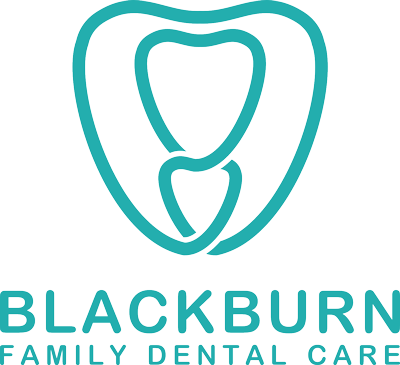In the span of a year, emergency medical visits in Australia have displayed an increase of 75%. Unlike other medical emergencies, dental problems are not spoken about widely enough and most don’t usually possess the knowledge of what to do in a dental emergency. To better equip you in handling such situations, this article outlines measures of action that can be adopted in a dental emergency.
Basic tips
The term ‘emergency’ can make one feel anxious and out of depth. It can refer to situations where you have unbearable pain or swelling. In this article we are referring to dental emergencies, in the sense of a traumatic injury (fall or knock). The first thing to do in such a situation is to take control before dealing with the specifics of the emergency.
1. Slow down and take a deep breath. It is natural that in cases of an emergency for your fight-or flight anxieties to be triggered. However, this is actually when you will need to be the most calm in order to grasp control of the situation. Focus on the problem at hand rather than your emotions so that you can calmly assess how best to proceed.
2. Evaluate the condition. Is the emergency because of a traumatic injury? Has the individual sustained a head injury, and if so is there any concussion. If concussion or head injury is suspected, dial 000, it is a medical emergency and go to your nearest emergency hospital.
3. If the patient is awake and there is no suspected head injury, carefully peer into his/her mouth to identify the problem. Is there any soft tissue trauma? Or bleeding? Stop any soft tissue bleeding first with gauze from a first aid kit and apply firm pressure for at least 30 minutes. If the cut is large or the bleeding cannot be stopped, call 000.
4. If there is no concussion, head injury, or cuts/bleeding, assess the tooth. Is the tooth cracked or has it completely fallen out of the gums? If the latter, consider the following steps:
Stow the fallen tooth. The possibility of salvaging a tooth that has fallen out is high if it is stored immediately in a safe and hygienic space and the time you get to a dentist is imperative. If you are an adult, you can gently wash the debris with some milk and attempt to place it back into the socket. If that is not possible, you can place it in a container of milk, which can then be brought in for emergency dental treatment. If the individual is a child, contact your dentist straight away. If you are able to remove the fragment, do so to prevent the risk of inhalation.
If the fragment of tooth has cracked, and if you are in doubt, just store it in a container of milk.
5. Immediately contact your local dentist. It is essential that you get in touch with your dentist ASAP after a dental injury. Make sure to explain in detail the situation in order to allow a dental expert to effectively guide you.
Emergency variations
Toothaches
Commonly misconceived to be a minor issue, toothaches can be the precursor to more serious issues. Begin by rinsing your mouth with warm water or antibacterial mouthwash. You may apply a cold compress for relief or to address any swelling that may have occurred. If the pain persists, you can also temporarily manage it by taking some painkillers.
Cracked, chipped or broken teeth
During cases of a cracked or chipped tooth, it is best to make preparations for emergency dental treatment. Firstly, take the steps that have been outlined in our basic tips. In this case, collect any broken pieces of tooth, rinse your mouth before biting on a gauze to stem any blood flow, and immediately contact your dentist. If in doubt, store the fragment in some milk.
Knocked out tooth
If you have an injury leading to a loss of a permanent tooth, you’ll require immediate treatment. When a permanent tooth has fallen out, pick up the tooth by the crown rather than the side. Simply run milk or water over the tooth without any abrasive handling before gently placing it back in its socket. If you can’t put your tooth back in its socket or there is danger of swallowing the tooth, preserve it by placing it in a cup of fresh milk and proceed to immediately call your dentist. The time the tooth is outside the socket is imperative for its survival. Contact your dentist ASAP.
Swelling
Localised gum swelling or facial swelling is usually a result of an infection that has originated from the teeth or gums. Localised swelling is when there is a small swelling adjacent to the tooth or gum. Sometimes there is a pimple where when pressure is applied, pus is expressed. In these cases, please contact your dentist ASAP. To reduce the swelling, the source of the infection must be addressed.
Large generalised swelling or facial swelling is more concerning. If swelling is affecting breathing or spreading to your eye, it is a MEDICAL emergency. Call 000 for urgent medical assistance.
Missing or loose filling
You can respond to a lost filling by inserting a piece of sugarless gum into the cavity as a temporary measure for comfort. It prevents sensitivity by blocking the exposed dentine and/or nerves to external hot or cold stimulus. Then immediately call your dentist. Alternatively, if you have a crown that has fallen out, look to contact your dentist right away. Make sure to safely store your crown and bring it to your appointment with your dentist. The crown may or may not be able to be recemented. The dentist will make that assessment during the appointment.
For all cases, contact your dentist at the soonest and most sensible opportunity to undertake emergency dental services. The sooner you see an emergency dentist, the sooner you will be able to end any feeling of discomfort or pain and restore your teeth to their original condition.
Regardless of the type of emergency, our experienced professionals at Blackburn Family Dental Care will be able to effectively handle your concern. Operating for more than 60 years, we provide services including emergency dental surgery, root canal treatment and crown, cosmetic dental implants, bridges, mouthguards and more. Get in touch with our friendly team today!

